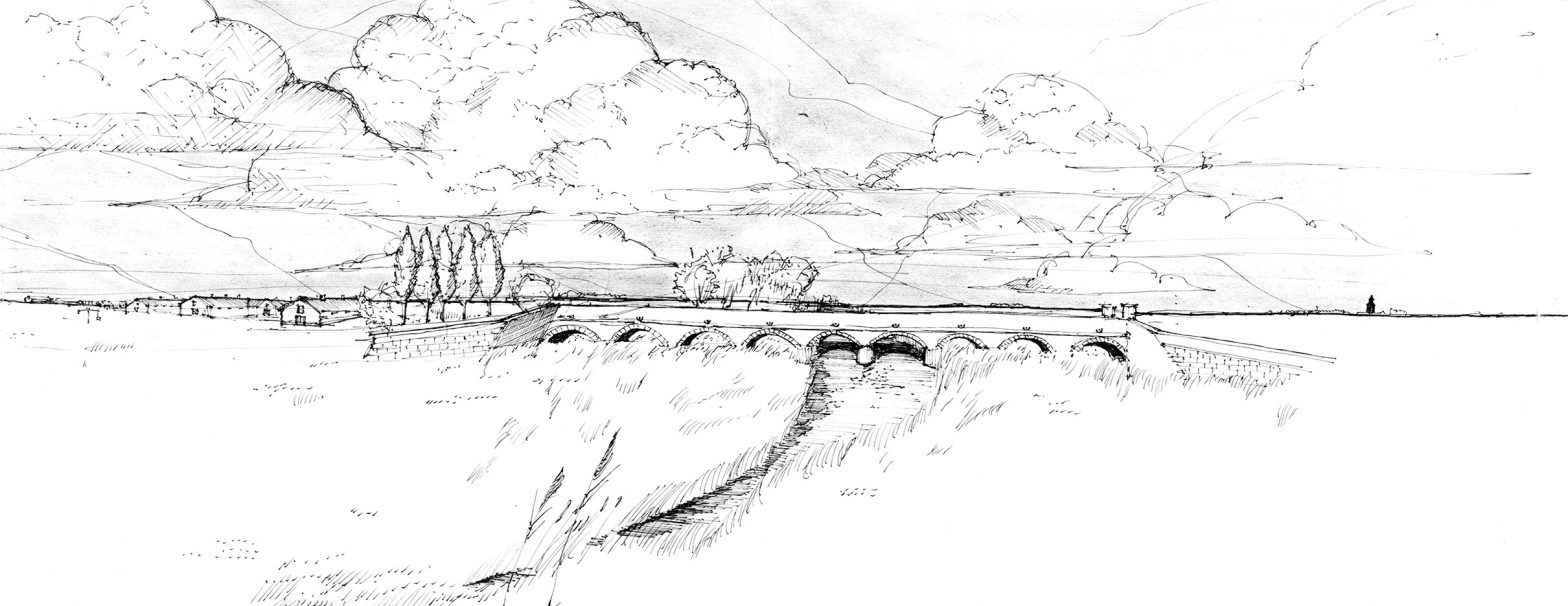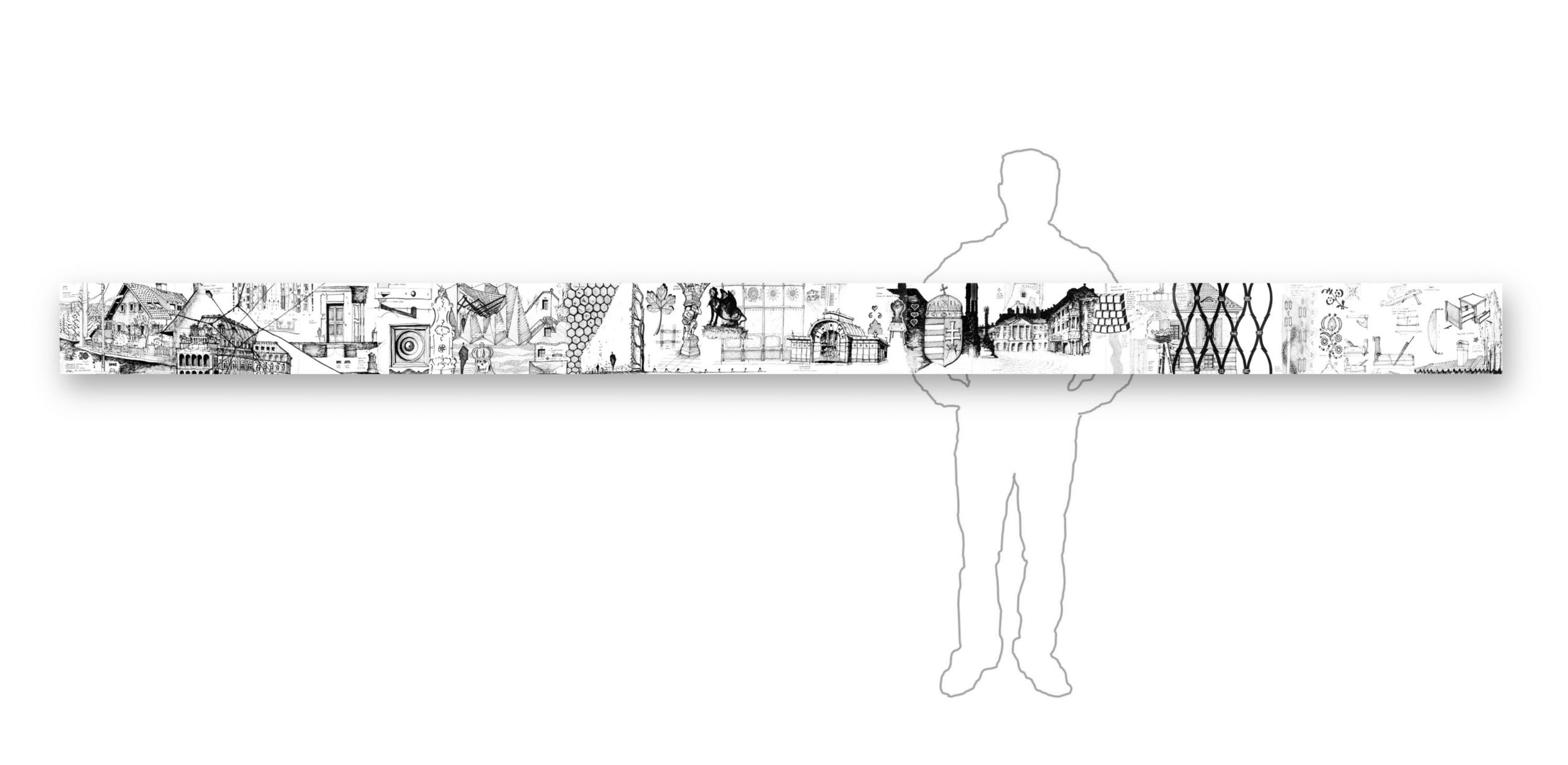6.36.Hungary-4-detail-g Highlights Relevant to Sustainable Design:
Structure can hold memory.
This landscape drawing includes a church tower on the horizon and a famous bridge at the center. The nine-arch Hungarian bridge story goes something like this: A great and vigorous horseman, the leader of a tribe, had ten women all immediately concerned for his well-being. When confronted by a foe and countless warriors, the ten women circled the tribal leader to protect him from insurmountable odds. The nine arches of the bridge represent the space created below their arms. Each vertical section is like their legs and their hands would meet at the keystone of the arch. I’m not sure how this story ends, but let’s assume the tribal leader does some heroic gymnastics and saves the day. Regardless, the proportions of the bridge are excellent.
The Hungarian Great Plain, where the bridge is located, is part of a cultural and environmental sustainability story. The World Heritage Hortobágy National Park, the Puszta, is almost 75,000 hectares. A hectare is 10,000 square meters or 2.471 acres, making this area over 185,000 acres. Located in the eastern part of Hungary on the Great Hungarian Plain,[i] the Puszta is protected land like our national parks. The Puszta is an example of how traditional pastoral land use can be harmonious between people and the environment for more than two thousand years. Land use practices include animal husbandry and grazing for livestock breeds that are adapted to the specific alkaline pastures, meadows, wetlands, and steppes. The grasslands, called the Steppe, cover about 5,000 miles from Hungary across the Ukraine and Central Asia to Manchuria at the east. Since horsemen can cross the mountain barriers across the Steppe, interaction along the breadth of this Eurasian grassland has occurred for most of recorded history. Attila the Hun led his nomadic horsemen people from the Central Asia steppes to Europe and threatened what was left of the Roman Empire. Early Hungarian ancestors saw the Romans as an occupying force; Attila the Hun was freeing them of an unwanted influence. Attila the Hun died in AD 453, and “Attila” has been a popular name in Hungary since then. History is relative at many levels.
Author and illustrator: Charlie Szoradi is an architect, inventor, and the CEO of Independence LED Lighting. He writes about many other topics related to sustainable grasslands through his extensive travels around the world.
If you have found this posting online, it is an excerpt from Mr. Szoradi’s book Learn from Looking that served as the inspiring seed content for this drawing share resource. For additional drawings and insights on grasslands and livestock, we hope that you enjoy exploring LearnfromLooking.com. You can search via general terms such as sustainability as well as narrower terms such as pastures, meadows, wetlands, steppes, and grasslands.
[i] Great Hungarian Plain:
Hungary 4: Detail (g)—United Nations Educational, Scientific, and Cultural Organization (U.N.E.S.C.O)—World Heritage Convention: http://whc.unesco.org/en/list/474.



